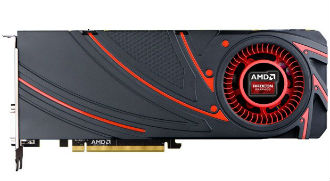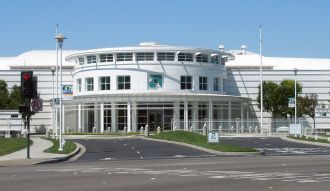 Huge GPU launches are back. An AMD webcast dragged on for more than two and a half hours and the ailing chip firm went to great lengths to explain a few new technologies, showcase games and of course talk GPUs. In fact, the event was so big that many complained the presentations were too long and too elaborate.
Huge GPU launches are back. An AMD webcast dragged on for more than two and a half hours and the ailing chip firm went to great lengths to explain a few new technologies, showcase games and of course talk GPUs. In fact, the event was so big that many complained the presentations were too long and too elaborate.
Let’s take a quick look at what AMD graphics boss Matt Skynner announced last night. As expected, AMD has a new naming scheme, mid range products now come with an R7 prefix, while the R9 prefix is reserved for high-end and performance boards.
The line-up starts with the R7 250, with 1GB of GDDR5 memory. AMD says the card scores 2,000 in the Firestrike benchmark and it’s priced at $89, so AMD calls it the king of sub-$100 gaming. The R7 260X comes with 2GB of memory and hits 3,700 in Firestrike.
The R9 series starts at $199, with the R9 270X with 2GB of RAM and a Firestrike score of 5,500. The R9 280X is priced at $299 and scores 6,800 in Firestrike. AMD says it was designed for 1440p gaming.
The flagship R7 290X boasts 4GB of RAM and a 512-bit memory bus, with bandwidth of over 300GB/s. AMD did not reveal its price or the exact specs and clocks of any of the cards. Rumours point at a $599 price tag, but rumours can be wrong. The general consensus is that the R7 290X should outpace Nvidia’s GTX 780, perhaps even the pricey Titan.
All in all the new generation looks very competitive, at least on paper. We’ll have to wait for some proper reviews before jumping to conclusions. The cards are expected to hit retail in the second half of October, but this isn’t official, either.
AMD also used the opportunity to talk up TrueAudio, a new spatial audio technology incorporated in some of the new cards. The tech press had a chance to see it, or hear it in action at the event and the first impression is very positive.
Then there were games, loads and loads of games. AMD scored an exclusive bundle deal with EA and it will sell a limited bundle edition of the R9 290X with Battlefield 4. AMD also promised to deliver even better even better Never Settle bundles, which could help the new cards gain a bit more traction.
But in our opinion, the biggest news wasn’t a new card or a new game – it was the fact that AMD chose to stage such an event at all. AMD and Nvidia are now talking about a renaissance in PC gaming and analysts seem to agree. Sales of gaming gear are bucking the industry trend and they are still growing. This year the sector will net $18 billion, but by 2016 the figure should hit $21 billion.
AMD and Nvidia believe consoles are no longer directly competing with PC gaming, not to mention smartphone and tablet gaming.
 Intel rival AMD said it has added two system on a chip (SoC) devices to its semiconductor roadmap.
Intel rival AMD said it has added two system on a chip (SoC) devices to its semiconductor roadmap.








